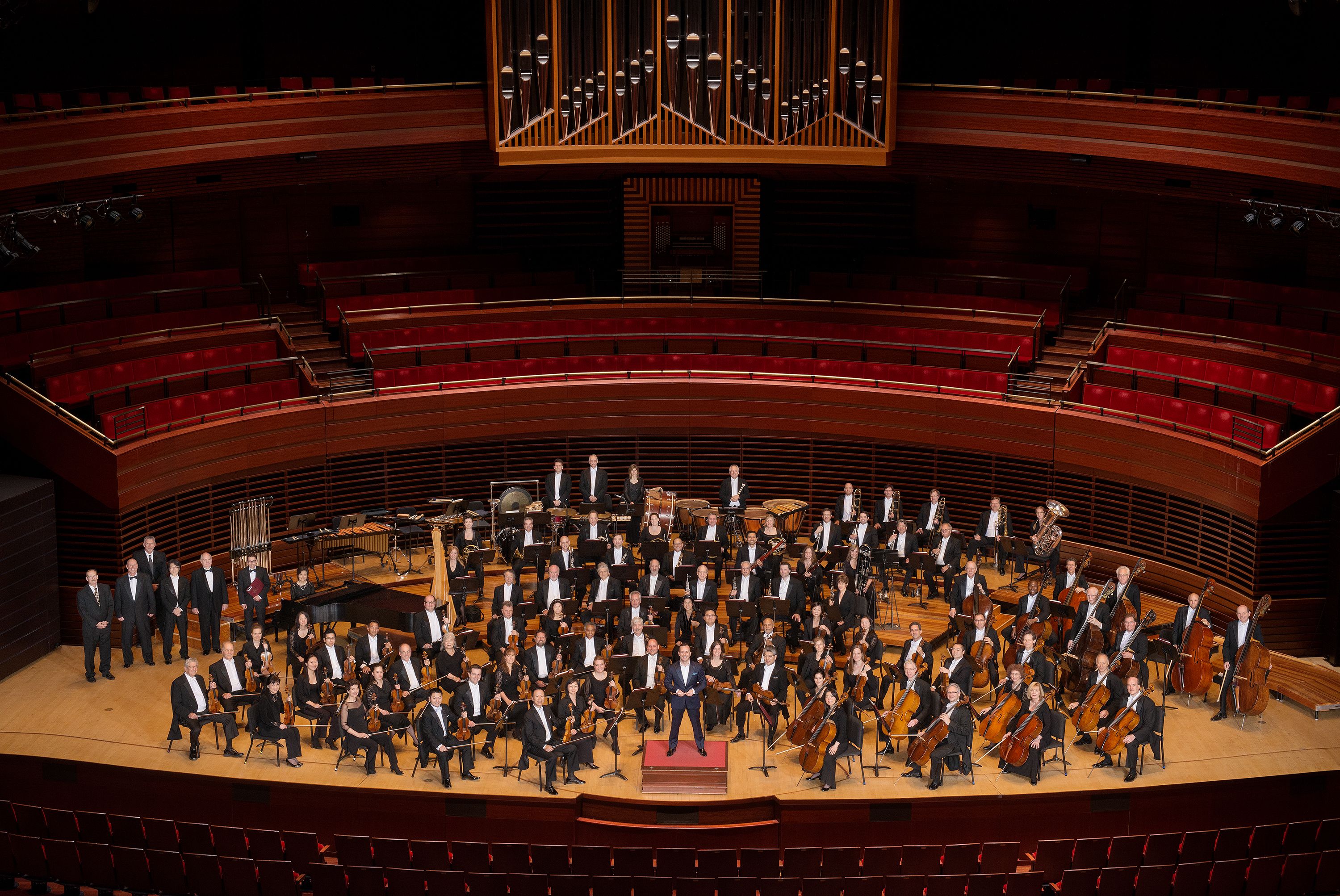SELECTIONS FROM LEYENDAS: AN ANDEAN WALKABOUT
Originally composed for string quartet in 2001; arranged for string orchestra in 2003
GABRIELA LENA FRANK
Born in Berkeley, California, September 26, 1972
Now living in Boonville, California
American composer Gabriela Lena Frank comes from a richly cosmopolitan background: her father was born in the United States from Lithuanian Jewish heritage and her mother is Peruvian, of Chinese and indigenous indio descent. Consequently, many of Frank’s musical works explore multicultural intersections in new, unexpected, and vivid ways. In celebrating explicitly this mestiza quality, she describes it as her “mission … something deeply American.”
Frank studied composition at Rice University, and earned her doctorate from the University of Michigan. She has received numerous commissions from leading ensembles including the Cleveland Orchestra, the King’s Singers, the Kronos Quartet, and the Brentano Quartet, and has participated with cellist Yo-Yo Ma in his Silk Road Project. She was awarded a Guggenheim Fellowship in 2009, the same year she won a Latin Grammy Award. The following year she was named a United States Artist Fellow. Frank is currently composer-in-residence with The Philadelphia Orchestra, having previously served in that capacity with both the Detroit and Houston symphonies. In the fall of 2022, San Diego Opera is scheduled to premiere her first opera, The Last Dream of Frida and Diego.
Regarding the influence of multiple cultural heritages on her compositions, Frank observes, “I think the music can be seen as a by-product of my always trying to figure out how Latina I am and how gringa I am.” On another occasion she declared, “I firmly believe that only in the United States could a Peruvian-Chinese-Jewish-Lithuanian girl born with significant hearing loss in a hippie town [Berkeley, CA] successfully create a life writing string quartets and symphonies.”
That philosophy is revealed lucidly in Frank’s Leyendas: An Andean Walkabout, composed as a string quartet in 2001 and then arranged for string orchestra in 2003. The work emerged partly from an early first-hand experience with unexpected culture shock in South America. Frank started travelling to Peru (her mother’s homeland) in 2000, connecting with members of her extended family there. With her multiracial upbringing, she expected to feel somewhat “at home.” Instead (she later recalled wryly), she got sick, was disoriented, didn’t know how things worked, and “felt rejected by the land.” “Yet there were enough moments,” she countered, “where I felt so connected and I was so happy that I kept going back. And as I kept going back, I realized more through familiarity, but it also felt like remembering.” That juxtaposition of cultures, and the process of becoming familiar with the occasionally surprising interactions between them, directly influenced Frank’s approach to writing this work.
Leyendas (Legends) draws inspiration from the notion of a cultural mestizaje, as outlined by the Peruvian writer José María Arguedas, where Western and indigenous cultures can coexist without the conquest or sublimation of one by the other. “As such,” Frank explains, “this piece mixes elements from the Western classical and Andean folk traditions” in a manner that would come to characterize her compositions in general.
Several critics have noted similarities between these objectives and Béla Bartók’s goal of incorporating folk idioms within Western contexts. Some have described Leyendas as sounding like “Bartók goes to Peru,” although “quite attractively so.” Frank doesn’t mind the comparisons—Bartók and the Argentinian composer Alberto Ginastera have served as inspirational models throughout her career.
Leyendas is a six-movement work, of which three will be performed in this concert. The brief opening Toyos depicts the sounds of the siku or Andean panpipes. (Siku is the indigenous Aymaran name for the instrument.) One of the largest instruments in that family is the toyo, with bamboo pipes that can extend up to four feet in length. Typically played in parallel fourths, the toyo calls for extraordinary stamina and lung capacity, producing a breathy quality that Frank imitates with strings in this work.
The rondo-like third movement, Himno de Zampoñas—, alludes to a particular type of Andean panpipe ensemble. (Zampoña is simply the Spanish name for the siku.) The melody is divided among the ensemble members using a technique known in Western medieval music as hocketing. One of the techniques of playing the zampoña involves overblowing, to produce more pronounced overtones—an effect mimicked in this movement with double-stopping.
The title of the fourth movement, Chasqui, refers to the chasqui runners of the Inca empire, agile and intelligent messenger-carriers who sprinted between towns separated by the high Andean peaks. Frank notes, “I take artistic license to imagine his choice of instruments to be the charango, a high-pitched cousin of the guitar, and the lightweight bamboo quena flute, both of which are featured in this movement.”
—Luke Howard
CLARINET CONCERTO
Composed in 1791
WOLFGANG AMADÈ MOZART
Born in Salzburg, January 27, 1756
Died in Vienna, December 5, 1791
Mozart, age 35, was basking in the enormous popular success of his most recent opera, The Magic Flute, when at 10:30 on the night of Friday, October 7, 1791, he wrote to his wife, who was taking a cure at a nearby spa:
"Dearest, Most Beloved Little Wife! I have this moment returned from the opera, which was full as ever. As usual the duet 'Mann und Weib' and Papageno’s glockenspiel in Act I had to be repeated and also the trio for the boys in Act II. But what always gives me the most pleasure is the silent approval! You can see how this opera is becoming more and more esteemed. Now for an account of my own doings. Immediately after your departure I played two games of billiards with Herr von Mozart, the fellow who wrote the opera which is running at Schikaneder’s theater; then I sold my nag for fourteen ducats; then I told Joseph to get Primus to fetch me some black coffee, with which I smoked a splendid pipe of tobacco; and then I orchestrated almost the whole of Stadler’s rondo. Meanwhile I have had a letter which Stadler has sent me from Prague."
Although the composer was clearly in great spirits, he was dead less than nine weeks later. The letter to Constanze, together with one to her the next day and another the following week, are his last that survive. Mozart died on December 5 at about one in the morning.
“Stadler’s rondo” refers to the finale of the Clarinet Concerto we hear tonight, Mozart’s last completed major work (a Masonic cantata and the unfinished Requiem followed). Anton Stadler (1753–1812) provided Mozart with the impetus for a variety of pieces and with them the clarinet entered music history in a truly significant way. The instrument was relatively new and still evolving when Mozart was a youth. He probably first heard it as a child on his travels to England, France, and Germany. More than a decade later, in 1778, he wrote to his father from Mannheim, which boasted a famed orchestra: “Ah, if only we had clarinets too! You cannot imagine the glorious effect of a symphony with flutes, oboes, and clarinets.” Mozart used them marvelously in Idomeneo and later operas, but was more sparing in his concertos and symphonies until his final years.
Anton Stadler, and his younger brother, Johann, were leading musicians in Vienna and offered Mozart new possibilities. For Anton he wrote the Clarinet Quintet (“Stadler’s Quintet,” Mozart called it in a letter), and probably the Trio for Clarinet, Viola, and Piano, the so-called “Kegelstatt” (Bowling Alley—allegedly written while playing skittles). Like Mozart, Anton was a Freemason and the two apparently became good friends. Biographers have tended to cast Stadler in a poor light because Mozart lent him a large sum of money that he could ill afford, but they must have enjoyed each other’s company. In the late summer of 1791, not long before writing the Concerto, Stadler accompanied Mozart to Prague for the premiere of La clemenza di Tito, in which Mozart included two arias with dazzling parts for obbligato clarinet and basset clarinet (an alto clarinet). As Mozart noted in his letter to Constanze, Stadler had stayed on in Prague and sent updates about the situation there. Mozart probably never heard the Concerto, though Stadler supposedly played it in mid-October in Prague.
The Concerto is scored for a small orchestra. Mozart provides the solo instrument with little competition from its woodwind colleagues, omitting the oboes and clarinets entirely, and even the double basses play a reduced role. He explores the chromatic and arpeggio possibilities the instrument offered him and, more importantly, its varied quality of sound in different registers. The soloist leaps from high pitches to low (and the reverse), which can seem to produce a sort of operatic duet between two characters.
In any concerto the composer is faced with the issue of the relationship between the soloist and the full ensemble, be it one of conflict, partnership, or something else. Mozart here chose an intimate partnership, often with a chamber-music texture, in which the orchestra asserts itself only in isolated tutti passages. The opening Allegro begins buoyantly rather than triumphantly with the orchestra but, once the soloist enters, moves on to explore a wide variety of moods. The simple ABA form Adagio, a slower tempo than Mozart usually used in his concertos, is the closest to opera and possesses the tinges of melancholy that have sometimes invited overly sentimental placement of his late works. The finale is a Rondo: Allegro, in 6/8 meter, in which the lively principal theme is surrounded by episodes of increasing intensity and display.
—Christopher H. Gibbs
SYMPHONY NO. 2 IN D MAJOR, OP. 35
Composed in 1845
LOUISE FARRENC
Born in Paris, May 31, 1804
Died there, September 15, 1875
As happens so often in the history of music, family connections can play a significant role in building a career. Bach, Mozart, and Beethoven, among others, basically continued the family business, often one that stretched back generations. Such circumstances have long benefited prominent women musicians, which helps to explain why Clara Schumann and Fanny Mendelssohn, respectively wife and sister of eminent composers, are among the best known from the 19th century. In the early 20th century, Nadia and Lili Boulanger were raised in a prominent musical household.
Louise Farrenc, born Jeanne-Louise Dumont in 1804, came from a distinguished family of painters and sculptors that had worked for the French royal family for generations. Her musical gifts as a pianist were evident at a very young age. She studied with Ignaz Moscheles, Johann Nepomuk Hummel, and Antonín Reicha, all eminent figures at the time, and her career began to take off. At age 17 she married the 10-year-older Aristide Farrenc, who had been a flutist at the Théâtre Italien and taught at the Paris Conservatory. In the 1820s he started a prominent publishing company and was particularly passionate about early “pre-Bach” music. Aristide published some of his wife’s piano compositions, one of which earned an especially enthusiastic review from Robert Schumann.
Farrenc branched out to write orchestral music in the mid-1830s with two overtures, followed by three symphonies. Berlioz commented in a review that one of the overtures was “well written and orchestrated with a talent rare among women.” What may today too easily seem a sexist observation registered the limited options available to women composers at the time. While women performers, especially singers, had long enjoyed chances for wide success, opportunities for composers were far less frequent, especially when it came to pieces that required many musicians to perform. Writing, publishing, and performing domestic music, such as songs and keyboard works, proved much more viable than symphonies or operas. Moreover, a composer learns by trial and error, which means the opportunity to hear one’s music in actual time and space is what helps nurture more polished products.
Some years before Farrenc died at age 71 in 1875, the prominent critic and music historian François-Joseph Fétis, an ardent supporter who admired her seriousness of purpose, praised her musical gifts, but lamented that her attraction to large-scale instrumental music was frustrated by the restricted opportunities and that for the public “the only standard for measuring the quality of a work is the name of its author.” He believed these factors explained why her major pieces were so soon forgotten “when in any other time her works would have brought her great esteem.” As her modern biographer Bea Friedland points out, the challenges for Farrenc’s career came not only from her gender but also from a contemporary musical cultural in France that was centered on grand opera and on salon music, both of the virtuoso and sentimental variety. When it came to significant orchestral and chamber music neither men nor women fared well in mid-century.
Farrenc’s three symphonies date from 1841, 1845, and 1847 and all were performed at the time, thus giving her opportunities to hear them. The Symphony No. 2 in D major, Op. 35, received its premiere at the Conservatory in May 1846 and Fétis conducted it the following year in Brussels. In 1842 Farrenc was appointed as professor of piano at the Conservatory, the only woman in such a prominent position. She taught there for 30 years and had many distinguished students (including her talented daughter, Victorine, who, had she not died so young, might have furthered the family’s artistic legacy). Farrenc’s compositional activities shifted to chamber music with pieces that won her the widest praise as she had more scope for originality. In addition to her career as a pianist, composer, and teacher she aided her husband with a massive project of keyboard music spanning some 300 years called Le Trésor des pianistes.
Farrenc adopts the early Romantic approach of her time in the four-movement Second Symphony that may bring to mind well-known symphonies from the first half of the 19th century. Friedland argues that despite their “expertise” and “frequent passages of sheer beauty,” her symphonies suffer because “their conspicuous affinity to models foredooms them to invidious comparison.” Yet much of this—like the conventional sonata form of the first movement—was standard procedure at the time. Since there were not many French symphonies being written in mid-century by anyone, the charming early efforts of composers like Camille Saint-Saëns and Charles Gounod can also seem derivative of German models. Sections of Farrenc’s Symphony may sound very much like Schubert’s early ones—fair enough, but since none of Schubert’s was published or performed at the time it would have been impossible for her to have known them. This style was in the air after Beethoven. A review of the Second Symphony’s premiere in 1846 mentions Mendelssohn and indeed his presence looms.
The first movement (Andante—Allegro) has a leisurely paced introduction that leads to a fast first theme for strings and a second one for woodwinds. The writing is consistently fresh, lyrical, and often delightful, reminiscent of the youthful Schubert. Throughout the Symphony the writing for woodwinds, as solos or in groups, adds greatly to the colorful palette of the orchestra. The following Andante is by turns relaxed and playful. The Scherzo: Vivace sports a Mendelssohnian flare (as commented upon in the early review) in ABA form with the middle section initiated by the lower strings. The final Andante—Allegro opens with a brief grand gesture before fast strings present an intense imitative theme in a “learned” style that is later presented as a fugue. Following a short interlude featuring woodwinds the Symphony concludes with a thrilling coda.
—Christopher H. Gibbs
Program notes © 2021. All rights reserved. Program notes may not be reprinted without written permission from The Philadelphia Orchestra Association and/or Luke Howard.






